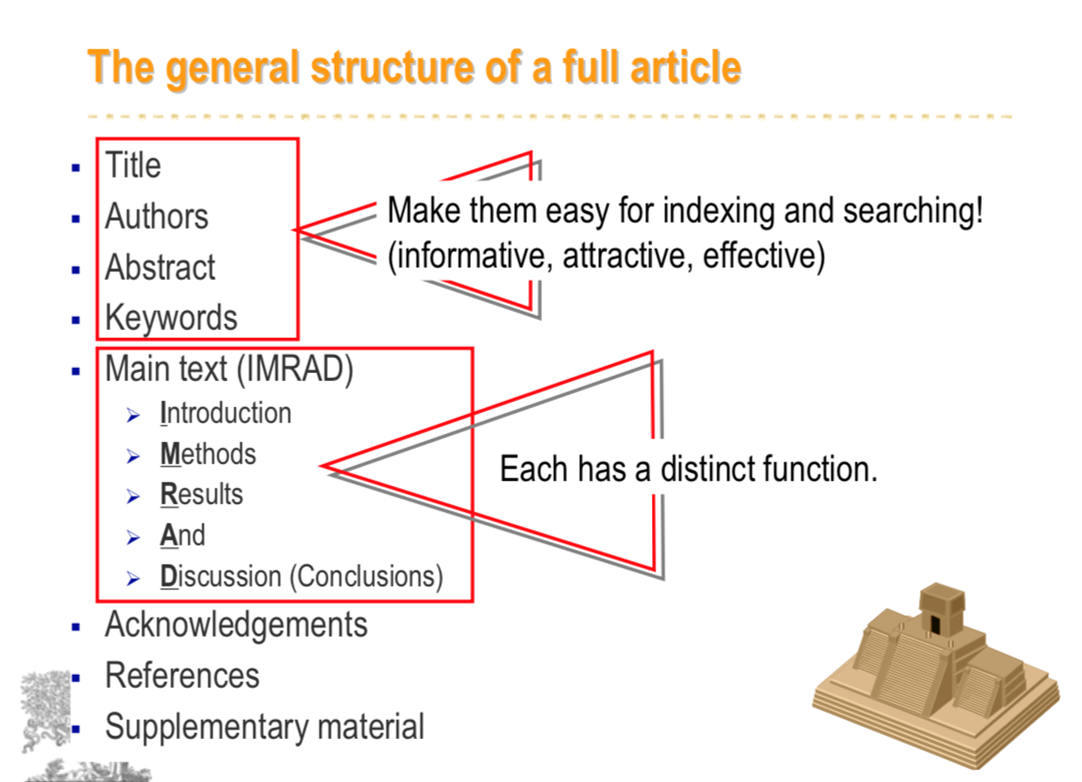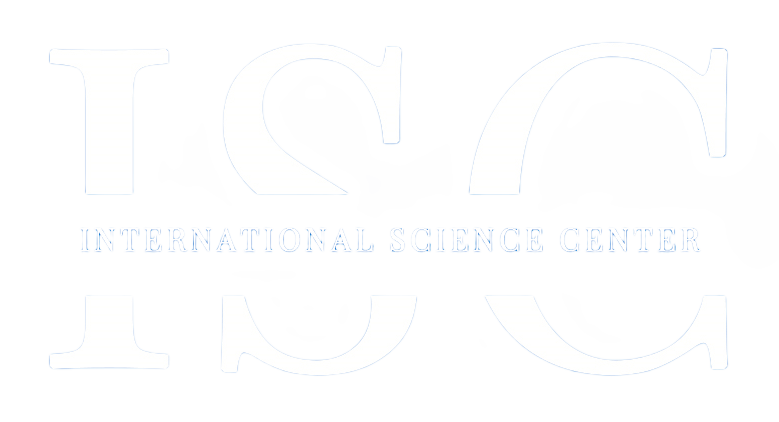常见问题解答
一站式学术服务平台. 我们的首要目标是您对我们的服务质量100%满意。
 是否可以指定的投哪些WOS SCOPUS期刊?
是否可以指定的投哪些WOS SCOPUS期刊?
我们无法指定你需要投稿的目标刊物,我们以检索收录为最终目标
列如:WOS SCIE JCRQ3-Q4 IF 1左右. Scopus (Elsevier) 期刊 Q3。
 怎么确保我的论文和个人信息不被泄露?
怎么确保我的论文和个人信息不被泄露?
良好的信誉是开展一切合作的前提,我们坚守工作原则和底线。我们与每一位客户在合作开始之前都会签署严格的保密协议。这些协议明确规定了双方的保密义务,确保客户的所有信息、数据和研究成果在合作期间及之后都得到最大程度的保护。我们愿意与客户建立长期稳固的合作关系,以互利的方式共同发展。
 如何确保论文质量?
如何确保论文质量?
从专业性角度,我们严格选择合作科研人员,所有作者均博士及以上学历,拥有扎实学术背景和对应领域的研究经验。从原创性角度,我们对每篇论文进行查重,所有论文均由我们的科研人员独立完成。从期刊收录要求角度,我们保证论文的研究内容和结果具有创新性和独特性,AI擅长在已有信息基础上进行分析和总结,但在提出新理论、设计新方法或进行跨学科研究方面,创新能力有限,在处理复杂数据分析中也有不足。从研究质量角度,从选题、文献综述、研究设计、数据收集与分析,到论文撰写和修改,我们每一个环节都严格按照学术研究的标准和流程进行。从反馈角度,我们根据客户要求和审稿人建议进行修改和调整,确保论文顺利通过审核并发表。
 服务内容包括什么?
服务内容包括什么?
我们采用包干制和项目制,为客户提供全面的期刊论文服务,确保每个环节都得到高质量的保障,并在项目完成后将整个研究成果转移给客户。具体服务内容包括:
1.论文编辑
根据客户提供的研究主题,由合作学者准备符合学术标准的论文。
编辑、翻译和润色:对文章进行语言润色、结构优化和结构调整,确保论文符合目标期刊的要求。
2.期刊推荐和投稿
期刊推荐:根据论文的研究领域和内容,推荐适合的目标期刊。
投稿服务:代为完成期刊的在线投稿过程,包括填写必要的信息、上传稿件和相关文件。
3.同行评审和修改
审稿建议:根据期刊审稿人的反馈,提供详细的修改建议。
论文修改:对审稿意见进行专业的解读和回应,代为修改论文并重新提交。
4. 其他辅助服务
数据分析和图表制作:根据研究数据进行统计分析,并制作符合期刊要求的图表。
参考文献管理:帮助客户整理和格式化参考文献,确保符合目标期刊的格式要求。
学术咨询:提供研究设计、方法选择、数据收集等方面的咨询服务。
5.保密协议和版权管理
版权管理:处理与期刊的版权转让事宜,确保客户的权益得到保护。
6.成果转移
研究成果转移:在项目完成后,将所有研究成果、数据和相关资料完整转移给客户,确保客户对研究拥有全部权利和使用权限。

 服务流程
服务流程
需求沟通:了解客户的具体需求和研究方向,制定服务计划。
协议签署:签署服务合同和保密协议,明确双方的权利和义务。
论文撰写/修改:根据客户提供的资料编辑论文,并与客户保持沟通,及时反馈进展。
期刊投稿:选择合适的期刊并代为投稿,跟进审稿进度。
后续服务:根据审稿意见进行修改和答辩,直至论文成功发表。
 SCOPUS.SCI.EI.SSCI.AHCI期刊发表
SCOPUS.SCI.EI.SSCI.AHCI期刊发表
SCI.EI.SSCI.A&HCI期刊写作发表周期长,这是因为对论文要求高质量和严谨的科学研究。整个过程包括广泛的文献综述、精心设计和实施实验、数据收集和分析、以及详细撰写和多次修改。在论文提交后,还需要经过同行评审和可能的多轮修改才能最终发表。因此,从研究开始到最终成稿和发表,整个周期往往较长,可能需要数月甚至一两年时间。这种周期的长短取决于研究的复杂性、数据的获取难度以及期刊的审稿流程,录用通知都2-3个月才能下来(刊出加检索8-16个月),且费用高。新人咨询沟通成本太高,很难成交...所以新人咨询这类问题,不予推荐、解答这类信息。
(第一次与我们联系的作者客户可以先考虑发SCOPUS)
 论文主要有哪些检索类型?
论文主要有哪些检索类型?
检索是指从文献资料、网络信息等信息集合中查找到自己需要的信息或资料的过程。为了进行检索,通常需要对资料进行索引。传统文献资料需要提取题名、作者、出版年、主题词等作为索引,而在网络时代,计算机可以对全文进行索引,即文中每一个词都能成为检索点。
主要类型:EI/SCI/SSCI/AHCI/ESCI/CPCI/Chemical Abstracts (ACS)/ Scopus (Elsevier)/ Inspec (IET)/EBSCO/WorldCat (OCLC)/等等...
 费用支付
费用支付
服务费用可以公对公.个人对公支付 (支持国际支付 Ecpss(如VISA和MasterCard,Paypal,Wise,支付宝等等).汇款后您需要保留汇款填写单或汇款回执单,如汇款时间金额等,方便我们工作人员核对;同时如果允许,汇款时您可以在汇款附言中填写文章编号或姓名等信息;我们有海外账户,全世界各地区汇款都可以接收。

 如果论文发表不了怎么办?
如果论文发表不了怎么办?
所有论文由资深学者教授和专业编辑完成,严格控制论文质量,确保符合高标准要求。我们会根据研究领域和论文内容,选择最合适的期刊,并与多个期刊保持良好合作关系,确保投稿顺利。我们提供全程跟踪服务,及时反馈审稿意见并协助修改,以确保论文被接收,我们承诺如果论文未能被接收,将根据具体情况提供重新修改投稿或无条件退款等保障,请客户保留汇款凭证。
 影响因子(Impact Factor)
影响因子(Impact Factor)
科睿唯安公司(Clarivate Analytics,原汤森路透知识产权与科技事业部)每年出版JCR(《期刊引用报告》,全称Journal Citation Reports)。JCR对包括SCI收录的3800种核心期刊(光盘版)在内的8000多种期刊(网络版)之间的引用和被引用数据进行统计、运算,并针对每种期刊定义了影响因子(Impact Factor)等指数加以报道。 一种期刊的影响因子,指的是该刊前二年发表的文献在当前年的平均被引用次数。一种刊物的影响因子越高,也即其刊载的文献被引用率越高,一方面说明这些文献报道的研究成果影响力大,另一方面也反映该刊物的学术水平高。
 投稿状态说明 *Status description
投稿状态说明 *Status description
Uploaded - the submission process has not been fulfilled for 100%. The editors do not see the paper and cannot work with it.
Submitted - the submission process has been finished successfully.
In Review - reviewers have been assigned to the paper; awaiting the submission of reviewers reports.
Editorial - the reviews have been completed; awaiting editor’s decision.
Rejected - the paper has been rejected (with or without review).
Revisions - the review process is over; the paper needs to be revised. Once the revised version is uploaded, the status changes automatically to Revised.
Revised - the revised paper awaiting editor’s decision.
Accepted - the paper has been accepted in its present form.
 常用专业术语
常用专业术语
Researcher : refers to the main author of the initial version of the paper (pre-print), and who will register with RC and obtain the permissions to use our platform. This author will make his or her preprint available to other co-authors for investment to pay for registration of papers in journals and conference papers, as well as optional Open Access.
Co-author: refers to the professional who enters the platform and invests in one of our investment plans, in order to actively and synergistically participate in the elaboration of one or several scientific papers.
Research (RCR): refers to the researcher who, after being accepted by our selection committee, becomes a freelancer, who will place a determined number of pre-prints in our platform on a monthly basis and at the service of the academic community so that co-authors can join them through a monetary investment. The RCRs will have access to our monetization system.
Freelancer: Is an independent worker who offers specific jobs for companies or individuals, in an autonomous way, managing his/her time and work himself/herself.
Institution: refers to universities, educational corporations and/or research centers that acquire one of our investment plans.
Price list: table where the base values and percentage of royalties are stipulated, according to type of publication, type of participant, quartile and number of authors entered in the publications.
Royalty base: amount based on which the royalties obtained by our participants are calculated depending on the quartile and type of publication and management selected.
Project: refers to a classification of specific knowledge and according to which a series of papers are grouped. Example: project to analyze the factors that affect university visibility in the countries of the Middle East.
Category: group in which a knowledge is included or classified Example: Computer science.
Investment plans: refers to our set of products and services where participants can invest to become co-authors in scientific publications.
Scientific paper (Paper): A scientific paper is a document that informs, in a clear and precise manner, about the results obtained from an innovative research work on a specific topic, and which is usually sent to a specialized journal for its publication and subsequent dissemination.
Publication management: process in which the location and placement in a scientific journal of a manuscript (paper) is carried out.
Pre-print: a version of an academic or scientific paper that precedes formal peer review and publication in an academic or scientific journal; this version is subject to feedback from the co-authors.
Paper: a version of a scientific manuscript that has been fed back by its co-authors, and is ready to be placed in evaluation by a scientific journal or conference.
Principal author (PA): we assume as principal author the researcher who conceives and executes the idea of the scientific paper.
Correspondent author: the person who handles correspondence with the editor: sends and receives mail by sending the paper, receiving the referee’s reports, etc. For the purposes of RC, this person will be the one who assumes the management of publication of the paper to the journal or conference.
Papers in Journals: a paper whose content is based on a scientific method and is published in journals indexed in SCOPUS and/or WoS, classified as Journal and quartile in scimago and/or impact factor in WoS.
Papers in Book Series: refers to those scientific papers generally published through conferences, but indexed by SCOPUS and classified by Scimago as Book series and quartile between Q2, Q3 and Q4; they may or may not be categorized in CPCI-S or CPCI-SSH.
Journal registration: refers to the payment that must be paid to the scientific journal for the publication rights of an article. This is established by the journal and under no circumstances will it include fees or payments for expediting publication processes that violate the ethical status established by the academic community.
Conference registration: refers to the payment that must be paid at a conference for registration of the main author (or the author that the participants of the paper select to support their research) and publication rights in a proceeding or conference papers according to the policies of the event.
Proceedings and conference papers: scientific paper presented and published in the memories of a conference. For CR purposes, these proceedings should be published in journals indexed by SCOPUS and/or WoS, and classified as book series or conference papers by Scimago or the indexing bases.
Campaign: refers to the process from the time the paper is placed on the fundraising platform until the total number of co-authors has been completed or the PA decides not to admit any more co-authors.
Participation system: refers to the categories of users, depending on the products and services they wish to join, among: researchers, co-authors, researchcyclers and institutions.
Cooperation system: refers to the types of contributions that each co-author is obliged to make for the improvement of the pre-print. They are classified into: data processing, critical writing, critical review and; layout, formats and translations.
Affiliation: refers to the organization/institution with which the authors are associated (e.g., where an author conducts his or her primary research), and which they cite in their article at the time of publication.
SCOPUS: is a bibliographic database of abstracts and citations of scientific journal papers. It covers approximately 18,000 titles from over 5000 international publishers, including coverage of 16,500 peer-reviewed journals in the fields of science, technology, medicine, and social sciences, including the arts and humanities. It is published by Elsevier and is accessible on the Web for subscribers.
Percentile in SCOPUS (P): is a value that serves to compare an ordered set of data. The percentile result is set to a value from one to 100. Generally, in the case of papers indexed by SCOPUS, those that are above or equal to the percentile 50 (i.e. the best half of the classification) are considered to be high-quality journals, book series or conference papers or TOP.
SJR (Scimago Journal Rank): is a metrics that weights the prestige of a journal. It distributes equally the prestige of a journal among the total number of citations in the journal and normalizes the differences in citation behavior of the different thematic fields.
Cite Score: Calculates the average number of citations received among all published documents in the three years prior to the metrics. It is updated annually and the percentiles of the indicator are presented in addition to the indicator.
Web of Science (WoS): Is an online scientific information service, provided by Clarivate Analytics (formerly Thomson Reuters), integrated into ISI Web of Knowledge, WoK. It provides access to a set of databases containing citations to scientific journal papers, books and other printed material covering all fields of academic knowledge.
The Web of Science Main Collection: consists of ten indices that include information gathered from thousands of academic journals, books, collections, reports and conferences, among many other sources.
The first three citation indices contain the references cited by the authors of the papers. It completely covers more than 12,000 important journals of worldwide impact.
Science Citation Index Expanded (SCI-Expanded) — 1900-to present
Social Sciences Citation Index (SSCI) — from 1900 to present
Arts & Humanities Citation Index (A&HCI) — 1975 to present
Emerging Sources Citation Index (ESCI) — 2005-to present
SCI-E: Science Citation Index Expanded is a multidisciplinary index of science journal literature. It fully covers more than 8,300 major journals in 150 scientific disciplines and includes all cited references captured from indexed papers.
SSCI: Social Sciences Citation Index is a multidisciplinary index of social science journal literature. It completely covers more than 2,900 journals from 50 disciplines related to the social sciences. It also indexes relevant elements selected individually from more than 3,500 of the world’s most important technical and scientific journals.
A&HCI: Arts & Humanities Citation Index is a multidisciplinary index of arts and humanities journal literature. It fully covers more than 1,600 leading arts and humanities journals from around the world. It also indexes relevant elements selected individually from more than 6,000 major science and social science journals.
Journal Citation Report (JCR): it is the best known and most valued quality indicator by research evaluation agencies. It measures the impact of a journal according to the citations received for papers published and collected in the Web of Science (WOS). JCR has two annual editions, JCR Science Edition and JCR Social Sciences Edition. The publication window is two years retrospective, although there is an Impact Factor with the data from 5 years ago. Note that there is no impact factor for Art and Humanities, except for History and Linguistics.
CPCI-S: Conference Proceedings Citation Index – Science this citation index covers conference literature in all scientific and technical fields.
CPCI-SSH: Conference Proceedings Citation Index – Social Sciences & Humanities This citation index covers conference literature in all fields of the social sciences, arts, and humanities.
IEEE Xplore: Institute of Electrical and Electronics Engineers Xplore Digital Library. It offers access to the full text of more than three million documents of the world literature (periodicals, conference proceedings, standards, books, training courses) in engineering and technology.
Anti-plagiarism report: report provided by RC to the co-author or institution where it reflects the study of our experts on the originality of the paper and some suggestions for improvements.
Similarity Index Report: The similarity report shows a percentage and a corresponding color that indicates where this percentage falls, in terms of content match. The percentage is generated by the amount of matching or similar text compared to the number of words in the submission in total. RC provides this report based on ithenticate turnitin for a minimal additional cost.
Collaboration agreement between co-authors: document that must be signed by all co-authors of a paper in order to commit to participate in our cooperation system and accept our terms and conditions.
Royalty plans: plans offered by CR for the generation of profits to the members of the participation system.
Research monetization system: royalty plans available to our participants to generate income based on the writing and/or publication of scientific papers in journals and conferences indexed by SCOPUS and/or WoS.
Third Party Payment Invoice: refers to the collection invoice issued by RC to the co-author who wishes to participate in one of our investment plans, and which will be in the name of a third party for payment; usually the co-author’s membership institution.
Open Access: is a movement that promotes free access to scientific literature, encouraging its free availability on the Internet and allowing any user to read, download, copy, print, distribute or any other legal use of it, without any barriers.
Certification of contribution to project: document that demonstrates the type of participation that the co-author had in the formation of the final version of the paper.
Analysis time: time that goes from the sending of the paper to RC by the researcher or RCR until RC approves it and places it on the platform to start the investment process. It should not exceed three working days.
Investment time: time that goes from the moment RC places the paper on the platform to start the investment process until the total number of co-authors has been completed or the AP decides to close the campaign. It should not exceed 30 calendar days.
Placement time: time from the end of the investment time to the submission of the paper to a journal or conference as agreed with the co-authors. This time includes the feedback of the co-authors to the pre-print to obtain the paper to be applied. It should not exceed 15 calendar days.
Evaluation time: refers to the time from the placement of the paper in the journal or conference until the letter of acceptance or rejection is issued to the corresponding author. It depends on the publication medium.
Improvement time: time that goes from the emission of the acceptance letter to the sending of the final version of the paper including improvements if the reviewing pairs deserve it. It should not exceed 7 calendar days.
Time of publication: time that goes from the end of the improvement time to the publication of the paper in the journal online or physically as appropriate (for our purposes, the in-press version is considered to be published). It depends on the publication medium.
Indexing time: time from the publication of the paper in the journal to its indexing in the SCOPUS or WoS databases. It depends on the indexing base.
Project time: time from investment closing to publication of the paper in journal or conferences as appropriate. For journal, it is estimated in one year and for conference papers of 6 months according to investment plan.
Limit of collection: minimum amount collected by a campaign to make payment for the registration of the paper in the journal or conference
更多问题邮件咨询 E-Mail: consult@scopus.ee![]() yh33@conerll.edu
yh33@conerll.edu![]()
